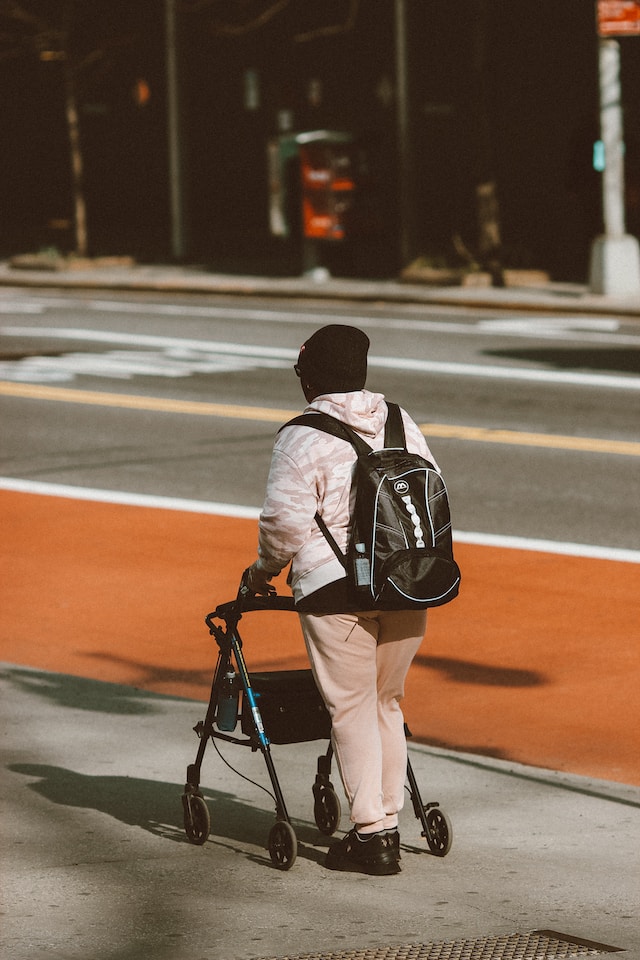According to one study, nearly two-thirds of seniors need help with daily activities. One of the most common is walking. For those who struggle to walk, a mobility aid can be an easy solution. However, it can be tricky to pick out the top mobility aid depending on your life circumstances and beyond.
There are plenty of types of mobility aids available, each with its distinct benefits. Keep reading as we examine a few top mobility aids for walking, from the walker to crutches and beyond. The more you know about available mobility aids for movement, the easier it will be to gain control of your life.
Walkers
A study shows that one of the best ways to improve your balance is by walking. If you struggle with staying upright, one of the best walking aids is a walker. A walker is essentially a four-legged cane – a metal frame with four posts to provide maximum balance to the user. The senior lifts the walker, moves it forward, walks to it, and repeats.
A walker is great if you have excellent ability in your upper and lower body but need some assistance with balance. It’s also ideal if you find yourself constantly walking over uneven terrain like grass or rocks, as either of these can easily cause someone with balance issues to trip and injure themselves.
There aren’t four wheels on a walker, which can make them easier and harder to manage, depending on where your strength lies. Purchase a quality one that won’t break apart on the go to avoid serious injury.

Canes
Next to the walking assistance devices is a cane. A cane is a curved stick with a little base at the bottom, designed almost to act as a third limb for the person using it. It’s an ambulatory aid and improves balance and stability in the walking process. Many people use canes when they injure one of their legs temporarily or permanently.
The best walking cane is ideal for those who can still move independently but have sustained an injury or don’t have balance abilities. Always walk with the cane on your good side and step with the weaker leg to provide proper support.
Canes are also one of the most affordable options on this list. There’s no significant technology in a cane, so it won’t cost an exceptional amount to make one yours.
Rollator
A rollator is a walking aid that is essentially a walker with wheels attached to the bottom. One study reports that walking will help seniors remain independent, which becomes much easier to accomplish with a rollator as an assistant. Rather than having the person lift and set the walker ahead, the rollator permits a simple rolling motion for a more fluid walking experience.
The rollator is excellent for senior adults who don’t have the upper body strength to lift a walker anymore. Most come with a basket for bags and a cushioned seat where walkers can take a break in the middle of their journey.
Of course, the wheels mean a rollator is best used on a flat surface like a sidewalk. They will struggle on the grass and more rocky terrain, so ensure your main walking path is stable to ensure the rollator works as effectively as possible.
Crutches
Crutches are a little less common in the world of older adults, but they are still an effective way to get around with assistance. These keep the weight off one of your legs, which can be effective for a short-term injury but isn’t necessarily the right choice if you need something for long-term stability.
If you have a temporary injury and enough upper body strength to lift yourself with crutches, they can be an excellent and cheap option. They’re also the better solution for those who can’t maneuver the bulk of a wheelchair without running into things at every turn.
Always look for a lightweight pair of crutches that are height adjustable, and offer pads to sit under the arms. These will allow you to be the most comfortable and permit adjustments to benefit your movement as much as possible. Of course, the weight in every movement should be placed primarily on your hands instead of your armpits to prevent serious injury.

Knee Scooters
Last on our list of mobility aids for walking is the knee scooter. This fun-looking device is a padded platform on wheels that permits you to place an injured leg on top in a bent position. From there, you hold the handlebars and scoot around with your leg on wheels. It’s best for those who have hurt themselves or recently undergone surgery on their knee or leg.
Like the crutches, knee scooters are more of a temporary solution than a permanent one. They’re best after surgery or for any other reasons you might want to temporarily take weight off your leg. They are functional only on flat surfaces and will be dangerous if you try to go down a hill or use them on the stairs.
If you decide to go with a knee scooter, always pick one with a comfortable platform to rest your knee on. Also, ensure it allows your knee to rest at a right angle, and you can adjust the handlebars. When your knee is on it, you should be able to hold the handlebars and sit up straight simultaneously for maximum relief.
Related: 7 Signs Your Parents Need More Help
Final Thoughts
Overall, there’s a multitude of options for walking assistance as a senior. From canes to knee scooters, each offers support to fit people from all walks of life. Mobility devices can help those in their later years regain control and bring far more safety than going out without one.
Whether you’re looking for comfort on your walk or something that will permit you to get out of your chair and move around, there is something here for you. Carefully consider each option and what it provides before landing on your final choice to ensure it’s the best available.


















